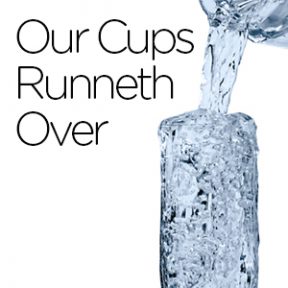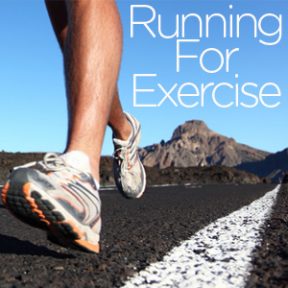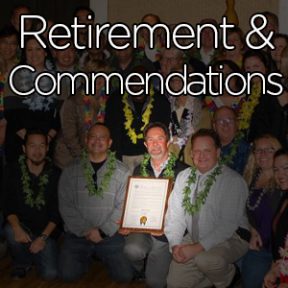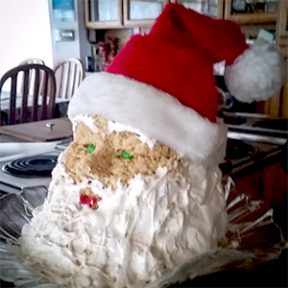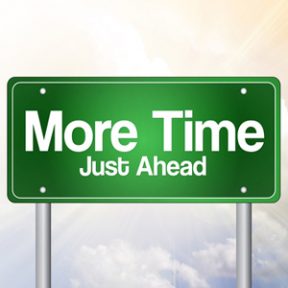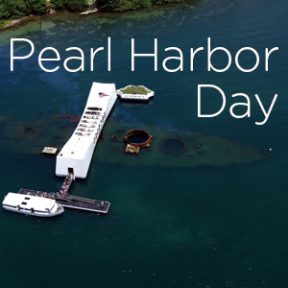 Today’s guest post is by Joe Jordan. Joe worked in the atmospheric and space sciences for decades at NASA’s Ames Research Center (Bay Area), before teaching at Cabrillo College and in the meteorology/climate, mathematics, and environmental sciences departments at San Jose State University. In addition, he has done science media work (especially radio), and leads occasional public outings featuring astronomy/stargazing and “physics in nature”.
Today’s guest post is by Joe Jordan. Joe worked in the atmospheric and space sciences for decades at NASA’s Ames Research Center (Bay Area), before teaching at Cabrillo College and in the meteorology/climate, mathematics, and environmental sciences departments at San Jose State University. In addition, he has done science media work (especially radio), and leads occasional public outings featuring astronomy/stargazing and “physics in nature”.
The recent Paris climate agreement was significant in that most of the world (almost 200 countries) agreed to something! But, alas, it was insignificant in that what they agreed on is almost nothing compared to what we need now.
Scientific fact is that even if the whole world completely stops emitting carbon right now (i.e., a 100% cut), the average global atmospheric temperature will not be going down anytime soon (we’re talking centuries to millennia). Voluntary promises to limit national emissions and global temperature rise amount to a kind of wishing exercise, absent the kind of economic incentives that would be provided by a steeply increasing price on carbon. See the advocacy work of Citizens’ Climate Lobby for extensive presentation and discussion of this highly valuable concept (CCL’s version is known as “fee and dividend”, which harnesses market forces in a revenue-neutral way with no increase in the size of government).
It’s great to be devoting some new funding to deployment of renewable energy (solar, wind, etc.) in the developing world, but we really need to “up the ante” on this, planet-wide, by an order of magnitude (i.e., factor of ten). We need a quick yet deep “makeover” of energy infrastructure everywhere, but the Paris agreement doesn’t provide real clues on how that’s to happen. Again, governments must squarely face the necessity to make carbon-burning more and more expensive, in order to keep fossil fuels in the ground so renewables at last have a real chance to flourish.
Furthermore, we need to not only halt all or most carbon emissions as soon as is superhumanly possible, but actually start extracting carbon from the atmosphere, in a big way. Nobody has yet shown how to do this in a way that’s anywhere near feasible economically or ecologically — but it’s an extremely important as well as potentially exciting (and even lucrative) project that people need to get on their radar screens. The more we can do now (and soon) to develop a much more advanced, sophisticated energy landscape (befitting a life form that fancies itself as “intelligent”), the less suffering will be experienced by the future generations to whom so much of this blog series is devoted.
 Today’s guest post is by Joe Jordan. Joe worked in the atmospheric and space sciences for decades at NASA’s Ames Research Center (Bay Area), before teaching at Cabrillo College and in the meteorology/climate, mathematics, and environmental sciences departments at San Jose State University. In addition, he has done science media work (especially radio), and leads occasional public outings featuring astronomy/stargazing and “physics in nature”.
Today’s guest post is by Joe Jordan. Joe worked in the atmospheric and space sciences for decades at NASA’s Ames Research Center (Bay Area), before teaching at Cabrillo College and in the meteorology/climate, mathematics, and environmental sciences departments at San Jose State University. In addition, he has done science media work (especially radio), and leads occasional public outings featuring astronomy/stargazing and “physics in nature”.
The recent Paris climate agreement was significant in that most of the world (almost 200 countries) agreed to something! But, alas, it was insignificant in that what they agreed on is almost nothing compared to what we need now.
Scientific fact is that even if the whole world completely stops emitting carbon right now (i.e., a 100% cut), the average global atmospheric temperature will not be going down anytime soon (we’re talking centuries to millennia). Voluntary promises to limit national emissions and global temperature rise amount to a kind of wishing exercise, absent the kind of economic incentives that would be provided by a steeply increasing price on carbon. See the advocacy work of Citizens’ Climate Lobby for extensive presentation and discussion of this highly valuable concept (CCL’s version is known as “fee and dividend”, which harnesses market forces in a revenue-neutral way with no increase in the size of government).
It’s great to be devoting some new funding to deployment of renewable energy (solar, wind, etc.) in the developing world, but we really need to “up the ante” on this, planet-wide, by an order of magnitude (i.e., factor of ten). We need a quick yet deep “makeover” of energy infrastructure everywhere, but the Paris agreement doesn’t provide real clues on how that’s to happen. Again, governments must squarely face the necessity to make carbon-burning more and more expensive, in order to keep fossil fuels in the ground so renewables at last have a real chance to flourish.
Furthermore, we need to not only halt all or most carbon emissions as soon as is superhumanly possible, but actually start extracting carbon from the atmosphere, in a big way. Nobody has yet shown how to do this in a way that’s anywhere near feasible economically or ecologically — but it’s an extremely important as well as potentially exciting (and even lucrative) project that people need to get on their radar screens. The more we can do now (and soon) to develop a much more advanced, sophisticated energy landscape (befitting a life form that fancies itself as “intelligent”), the less suffering will be experienced by the future generations to whom so much of this blog series is devoted.
 It’s not whether the glass is half full or half empty anymore; it’s how to turn off the water because the glass is overflowing…
It’s not whether the glass is half full or half empty anymore; it’s how to turn off the water because the glass is overflowing…
With the holidays amidst the chaos that ensues with shorter days and unpredictable weather, I’m hearing that everyone is feeling stressed out and in survival mode. Students arrive without their books and parents forget appointments. Yup, even me. I showed up at a doctor’s appointment that I had cancelled the week before; I had completely forgot that I had rescheduled it and didn’t erase the original appointment. Oops! I couldn’t believe that happened to ME! I’m the one who organizes everybody else!
That’s when I read this and it all started to make sense to me:
“It’s like having water poured into a glass continuously all day long, so whatever was there at the top has to spill out as the new water comes down. We’re constantly losing the information that’s just come in — we’re constantly replacing it, and there’s no place to hold what you’ve already gotten. It makes for a very superficial experience; you’ve only got whatever’s in your mind at the moment. And it’s hard for people to metabolize and make sense of the information because there’s so much coming at them and they’re so drawn to it. You end up feeling overwhelmed because what you have is an endless amount of facts without a way of connecting them into a meaningful story.”
– Tony Schwartz,”The Way We’re Working Isn’t Working”
We have too much going on. PERIOD. Back in the day, we used to call it “Sensory Overload.” And that was when we played loud music while walking at the same time. Today, we have access to more information than we could ever learn and more movies than we could ever watch in a lifetime. In addition, we need to keep up with the Joneses using social media that pours even more useless information into our overflowing glasses. That’s why we can’t take in more information and can’t remember simple things, like removing an appointment from our calendars…
Young adults and teens tell me that they have no short-term memory. Huh? This is really a problem. Memory issues used to effect the elderly, but every day I see kids having lapses that they shouldn’t have in their youth. Their glasses, too, are overflowing with useless memorization of facts for rote AP classes at school, and with texting and indulging in superficial conversations using overused expressions with abbreviations that make communication a stretch at best.
We need to stop and pour out some of that water in our glasses. Turn off stimulation. Connect with our friends and family. Then we can savor interesting information and process it. By doing this, we can commit thoughts to our long-term memory.
So, slow down, choose what it important to you and do just that over the holidays!
 Today’s post is by Jonathan Williams, an Exercise and Fitness Specialist from San Jose State University with a B.S. in Kinesiology. He is also the co-founder and president of Silicon Valley Applied Biomechanics (SVAB).
Today’s post is by Jonathan Williams, an Exercise and Fitness Specialist from San Jose State University with a B.S. in Kinesiology. He is also the co-founder and president of Silicon Valley Applied Biomechanics (SVAB).
The new year is upon us, and many people are setting weight loss goals. Aside from buying a gym membership, a large number of people will be looking towards running and walking as a means of burning calories. There is a certain freedom of putting on your shoes and heading out the door for a run or walk. You don’t need much; a pair of shoes and maybe an iPod, making it very simple and convenient.
However, did you know that when your foot strikes the ground, you could be loading your body with up to 3 times your own body weight? With the additional weight gained during the holidays, this leaves many people in a precarious situation of wanting to lose weight, but potentially hurting their knees in the process. So what can be done to help keep your knees safe? There are two avenues to consider: changing how you make contact with the ground, and or changing your footwear. Traditionally, we have been told that when running we first make contact with the ground with our heel. In fact, the majority of the running shoe industry promotes this ideology and bases their shoe technology on this assumption. Shoes that have pronation or supination control, more padding in the heel, gel technologies, and air cushions are all designed to reduce the impact forces when you make contact with your heel. However, there is a large body of research that indicates that this assumption may not be entirely true. In response to this research, companies like New Balance and Vibram have designed minimalist shoes that promote a different kind of foot striking pattern called fore‐foot striking technique. This pattern avoids a heel strike altogether, which in turn eliminates the need for extra material underneath the heel, thus reducing weight. Controversy arises when companies (such as Nike and Adidas) conduct their own research showing that running with minimalist shoes actually increases knee pain when running. This is true, if you do not change how you make contact with the ground, which they did not instruct their research participants to do. If you are still heel-striking, and take away the cushion under the heel, then yes you will get more knee pain as you are increasing the impact forces. However, if you change the way you make contact with the ground, you can indeed reduce the amount of impact. Retraining for the average runner who is heel-striking is a process that can take a good amount of time and effort, and is met with much resistance from traditional running ideologists. So, what should you consider when choosing to take up running to lose weight next year? Am I a heel-striker? Do I want to remain a heel-striker, or would I consider retraining? If you are invested in the traditional heel-striking ideology, then by all means keep a large pad under your heel as you will experience large impact forces when you make contact with the ground. However, if you are interested in reducing impact forces on the body, then you may want to consider retraining your running pattern to a fore-foot striking technique. When you actually buy a pair of New Balance shoes, you will actually see a warning label that states you should retrain how you run before using their minimalist shoe, and there is information on their website about how to do so. I think most people purchasing new products in general will tear the labels off and just start using it, like other clothing items, and then have a bad experience with the product. Here are a couple of quick tips for those who are interested in retraining their running pattern:- Land with your foot under your hip. This will reduce the tendency to land on your heel.
- Take shorter strides, but more frequent strides. This may lead people to think that you will run slower, and at first you may. However, you can indeed run as fast or faster with a fore‐foot strike by increasing the stride frequency. Think about a sprinter “running on his/her toes” and simply reduce the speed. Also, you do not need to exaggerate the lifted heel as this may overstress the calf muscles.
- Listen to your feet. If you hear loud footsteps, you are probably creating large impact forces. At first it may feel like you are “tip toeing” but in general the more quiet your feet are, the less impact you are creating.
- Take your time to retrain. The process can be a bit humbling as you may need to reduce your overall mileage when changing how you run. This is because you are using different muscle patterns than you may be used to when heel-striking. Run a short distance (50‐100 strides) then walk to recovery, and repeat.
References:
Bonacci, J., Saunders, P.U., Hicks, A., Rantalainen, T., Vicenzino, B. T., & Spratford, W. (2013). Running in a minimalist and lightweight shoe is not the same as running barefoot: a biomechanical study. British Journal of Sports Medicine, 47(6), 387-392.
Cheung, R. T. H., & Davis, I. S. (2011). Landing Pattern Modification to Improve Patellofemoral Pain In Runners: A Case Series. Journal Of Orthopedic & Sports Physical Therapy, 41(12), 914–‐919. doi:10.2519/jospt.2011.3771
Noehren, B., Scholz, D., Davis, I. (2011). The Effect of real time gait re–‐training on hip kinematics, pain and function in subjects with patellofemoral pain syndrome. British Journal Of Sports Medicine,(41),691–696.doi:10.1136/bjsm.2009.069112
Jonathan Williams is an Exercise and Fitness Specialist from San Jose State University with a B.S. in Kinesiology. Co-founder and president of Silicon Valley Applied Biomechanics (SVAB), a local nonprofit organization. A recipient of the Dean’s Scholar Award and best Senior Movement Project in the Kinesiology Department, he graduated with Cum Laude Honors. He has experience as a licensed amateur mixed martial artists competing in the octagon. Regularly volunteers services at local high schools, and local running events. Researcher at SJSU’s biomechanics lab with fore-foot running expert James Kao Ph.D., with a focus on reducing disabilities caused by knee pain.
- Bachelors of Science Kinesiology
- Personal Training from the National Academy of Sports Medicine (NASM)
- National Counsel on Strength and Fitness (NCSF)
- TRX Suspension Training
- National Exercise and Sports Trainers Association (NESTA)
Quote from Dafne Ocana
“I never knew anything about fore-foot running until I started training with Jon, but I really wished I would have known before. His insight and knowledge about how to properly run and the mistakes I was making have made my running better, even with an ACL tear. I’m more aware about hill striking when I jog and when I focus on fore-foot running I notice better endurance and a more enjoyable run. At first it takes a little to get used to and it’s kind of weird, but it really makes a difference.”
 Even when you’ve been married for 30+ years, sometimes you learn something about your significant other when you least expect it.
Even when you’ve been married for 30+ years, sometimes you learn something about your significant other when you least expect it.
My husband Rob will be retiring on Dec 30th, and his staff hosted his retirement party on Friday. As he received COMMENDATIONS from the Board of Supervisors for creating and implementing environmental programs throughout the County. Jaclyn and I both glanced at each other with astonishment. She leaned over to me and asked, “Did you know all of this?”
While we knew that he founded the California Product Stewardship Council, a nonprofit organization, and that he pulled together 15 cities and the County to cooperate on initiatives, we didn’t know the battles he fought to make it all happen. Neither Jaclyn nor I understood the magnitude of his accomplishments until we stood there with his colleagues and heard their fascinating stories.
The story I loved hearing the most was from his grad school professor, Bruce Olszewski. First, he teased Rob because he always sat up front and enthusiastically raised his hand – like an over achiever in grade school – even though Bruce never called on him. Then, Bruce admitted that most people and even professors are good at giving lip service but when it comes down to initiating and implementing change, Rob is one of the few people to actually do the things that professors talk about in class.
As the guests shared their stories about Rob’s no-holds-barred approach to changing environmental policies in California, I realized that they were really sincere in their appreciation for his leadership when they presented a commendation from the Board of Supervisors for his service and prepared a resolution to the Board of Supervisors to ask that Rob be granted a special provision to work as a consultant immediately after he retires.
Jaclyn and I were so proud to see how his innovative solutions to environmental problems were so appreciated by his colleagues, city officials, the Board of Supervisors, and his staff. It’s amazing to see that you never stop learning about your significant other… Looking forward to what his next chapter will bring!
Finding Branches
Building the “trunk” for the Eco Xmas Tree is easy and I have continued to use that same trunk every year since 1994.
We cut pine branches off the trees on our property to build our “real” Eco Xmas Tree. By gathering Nicole’s and Jaclyn’s friends, in just a few hours we cut down plenty of branches.
We sort the branches by size and then the building begins. Starting at the bottom, we put the large branches in the trunk.
When branches are too big, we whittle them down with a knife.
If you don’t have a pine tree in your yard, go to Christmas tree farms or ask neighbors if you could trim their trees! You really don’t need many branches and thinning trees makes them healthier.

 Okay, Kellogg’s should really take notice of my holiday Rice Krispies Treat sculptures!
Okay, Kellogg’s should really take notice of my holiday Rice Krispies Treat sculptures!
Seriously! My husband thinks I’m crazy because I can’t eat any of the ingredients and it is almost impossible not to taste the sweet and gooey Rice Krispies and marshmallows as I scoop them out of the hot pot.
This season I experimented with melting marshmallows to create Santa’s beard. So much fun!
I’m already thinking about my next holiday sculpture…

 Good news! If you’re a transfer student and you missed the UC deadline of Nov 30th, you’re in luck! The UCs have extended their deadline for transfer students to Jan 4th. The UC system is planning to increase transfer enrollment by 5,000 students this year. Their goal is to admit one transfer student for every two freshmen.
Good news! If you’re a transfer student and you missed the UC deadline of Nov 30th, you’re in luck! The UCs have extended their deadline for transfer students to Jan 4th. The UC system is planning to increase transfer enrollment by 5,000 students this year. Their goal is to admit one transfer student for every two freshmen.
If you’ve already submitted your applications, you can add more campuses but you can’t make changes to your essays or any other part of your application except contact information. If you started but didn’t complete the application, you can continue to work on the same application.
Don’t forget to submit any changes to your winter or spring courses on the Transfer Academic Update (TAU) by January 31st. If you have fall grades to report by then, this would be the perfect time to let them know how you’re doing.
 I am terribly guilty of “overdoing” Christmas.
I am terribly guilty of “overdoing” Christmas.
When Nicole and Jaclyn were young, I bought, wrapped, and piled so many gifts under the tree that it would take the girls 3 days to unwrap them. It’s true!
Back then I justified it by purchasing “educational games” that stimulated their brains or art kits that would open the world of tie dying, sand sculpture, or whatever was the latest craze at the time.
Knowing that I was overdoing Christmas, I insisted that we play the games and open the art kits after they opened them so they would fully appreciate them. And then, they wrote their thank you cards to all of the family and friends who also contributed to the piles of presents under the tree BEFORE opening the next gift.
Don’t get me wrong – I appreciated that we had so many family and friends who wanted to give during the holidays. But it all got way out of control.
When my girls asked me what I wanted for Christmas this year, I wrote out a list of things that I would really treasure and enjoy. I asked for a bike-riding trip with the family or to have everyone help build an herb garden in my kitchen with me. I also asked them to make earrings with me so we could create the perfect jewelry using the crystals and sterling silver that I love to wear. And if this list didn’t work for them, I asked to have the CD player repaired in my car and a playlist of my favorite oldies hits. I wanted Christmas to be about sharing time together and making new memories.
What happened next was really inspiring.
Jaclyn wanted spectacular beach photos for her living room walls. She had picked out a few photos from local photographers’ galleries and sent us links to their websites. But with my new philosophy on Christmas this year, I thought I would shoot all of her favorite beach hangouts in Santa Cruz and enlarge them for her walls. I shot dramatic stormy sunsets in Capitola and Pleasure Point, and then just yesterday I captured some of the 15-foot waves at Steamer’s Lane.
Winters in Santa Cruz bring huge waves – it’s a surfer’s paradise. I enjoyed going to her old stomping grounds at Black’s Beach and the Cove, where she hung out with friends in high school. There’s something more personal when one spends a little time doing something special for you. When I sent her photos to choose from, she called me to tell me how really touched she was that I went out to shoot these photos just for her.
Since then, I’ve been all over Santa Cruz with my camera and monopod really loving the beautiful place we call home, and I’m looking forward to a Christmas where our gifts come from our hearts, and not so much from our wallets.
 Today’s guest post on Pearl Harbor Day was written by Mas Hashimoto of the Watsonville-Santa Cruz Japanese American Citizen’s League (JACL). Looking at such a shocking and emotional event from a historical perspective helps younger generations of Americans understand the context of Japan’s plans, and the errors that allowed Pearl Harbor to happen.
Today’s guest post on Pearl Harbor Day was written by Mas Hashimoto of the Watsonville-Santa Cruz Japanese American Citizen’s League (JACL). Looking at such a shocking and emotional event from a historical perspective helps younger generations of Americans understand the context of Japan’s plans, and the errors that allowed Pearl Harbor to happen.
On Sunday, December 7, 1941, the Japanese Imperial Navy struck our Pacific fleet at Pearl Harbor, Honolulu, Hawaii without warning or a declaration of war.
Why? What was to be gained?
Imperialist Japan’s plan was: (1) to destroy the American Pacific fleet which had been transferred from San Diego to Honolulu; (2) then, without opposition, have a free rein in the Pacific theater of the war, conquering the Philippines and Southeast Asia; (3) fight defensively against the United States; and (4) when Americans tired of the war, Japan would negotiate for a truce, a cease-fire.
The Japanese vastly underestimated the will of the American people. They believed articles which belittled the average American as lazy, selfish, unprincipled, and undisciplined.
At Pearl Harbor, the Japanese sank aging, obsolete battleships and other ships but no aircraft carriers. They –the Lexington, Enterprise, Yorktown, and Hornet– now the heart of the fleet, were elsewhere. The failure to destroy the fuel depots and dry docks (for repairing ships) was also a huge mistake on the part of the Japanese. Pearl Harbor was back in action the next day. The Japanese had no plans to invade and occupy the Hawaiian Islands. The Japanese had no plans to invade the mainland of the United States.
In April of 1942, the Doolittle Raid from the Hornet bombed cities in Japan. It boosted the moral of the American people. In the Battle of the Coral Sea in May of 1942, the Lexington was sunk and the Japanese believed it had sunk the Yorktown, too. Most important, the Japanese advance in the South Pacific was curtailed.
In May of 1942, the most important early battle—the Battle of Midway—took place. The US military intelligence had broken the Japanese secret code and knew of the Japanese naval battle plans. We lost the Yorktown, but it with the Enterprise and Hornet sank four Japanese aircraft carriers with their best naval pilots. The Japanese were never to recover from their losses. We didn’t know it then, but this battle was the turning point of the War in the Pacific (1941-1945).
Everyone is encouraged to visit the USS Arizona Memorial at Pearl Harbor to pay one’s respect to those who lost their lives on that fateful day. Next to it is the USS Battleship Missouri Memorial, upon whose deck the Japanese surrendered on September 2, 1945.
Now, nearly 75 years later, the commander of the U. S. Pacific Command is Admiral Harry B. Harris, Jr. His father served as a US Navy Chief Petty Officer, and his mother is Japanese. He was born in Japan. Today, Japan is our closest and most dependable ally in the Pacific if not the world.
Back in 1994, I built my first Eco-Xmas tree. Check out my previous post to see why I decided that I couldn’t buy another cut tree or living tree, and buying an artificial tree was just too fake for me.
I built it using scrap 2” by 4” and a ¾” plywood base. Then I drilled holes in the 2” by 4” for the live pine branches.
At the base, I drilled large holes for thicker branches and gradually made the holes smaller as I progressed upwards.
Here are some photos of the process:



